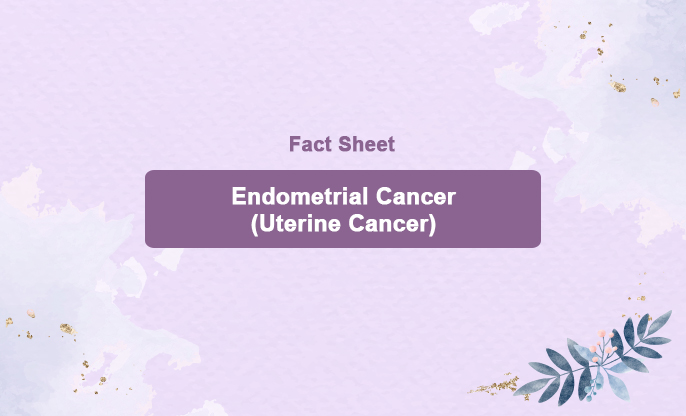
What is this?
Ovarian cancer occurs in the ovaries, which are part of the female reproductive system. It is often not detected until it has spread within the pelvis and abdomen, making it more challenging to treat.
The ovaries are composed of three types of cells, each of which can develop into a different type of tumor:
Epithelial Tumors: These originate from the cells covering the outer surface of the ovary and are the most common type of ovarian tumors.
Germ Cell Tumors: These arise from the cells that produce eggs (ova).
Stromal Tumors: These develop from the structural tissue cells that hold the ovary together and produce estrogen and progesterone.
Some ovarian tumors are benign (non-cancerous) and remain confined to the ovary. Malignant (cancerous) or borderline (low malignant potential) tumors can metastasize to other parts of the body and can be life-threatening.
Types of Ovarian Tumors
Epithelial Tumors:
Benign: Includes serous cystadenomas, mucinous cystadenomas, and Brenner tumors, which don't spread and usually aren't serious.
Borderline: Tumors with low malignant potential, such as atypical proliferative serous and mucinous carcinomas, affect younger women, grow slowly, and are less life-threatening.
Malignant: Epithelial carcinomas, which make up 85-90% of ovarian cancers, include types like serous (most common), clear cell, mucinous, and endometrioid. They are graded by how much they resemble normal tissue, affecting prognosis and treatment.
Ovarian Germ Cell Tumors:
Teratomas: Can be benign (mature teratoma) or malignant (immature teratoma), with mature teratomas being the most common and usually curable by surgery.
Dysgerminoma: The most common malignant germ cell tumor, typically affects teens and twenties, and has a high cure rate with treatment.
Endodermal Sinus Tumor and Choriocarcinoma: Rare and aggressive but usually responsive to chemotherapy.
Ovarian Stromal Tumors:
Comprising about 1% of ovarian cancers, often found early and usually have a good prognosis. Common types include granulosa cell tumors, which can produce hormones causing symptoms like abnormal bleeding.
Ovarian Cysts:
Usually related to ovulation and often resolved without treatment. In non-ovulating females or if persistent, further tests may be needed to rule out cancer.
Other Related Cancers
Primary Peritoneal Carcinoma (PPC): Similar to ovarian cancer but originates in the peritoneum, often treated the same way as ovarian cancer.
Fallopian Tube Cancer: Rare and similar to ovarian cancer, with a slightly better prognosis.
Treatment typically involves surgery and may include chemotherapy or radiation, depending on the type and stage of the tumor. Early detection and treatment significantly improve outcomes.
Causes of Ovarian Cancer:
The exact causes of ovarian cancer are not fully understood, but several factors can increase the risk of developing the disease:
Genetic Factors:
Inherited Gene Mutations: BRCA1 and BRCA2 gene mutations significantly increase the risk of ovarian cancer. These mutations can be inherited from either parent.
Family History: A family history of ovarian cancer, breast cancer, or colorectal cancer can increase risk due to shared genetic factors.
Reproductive History and Hormonal Factors:
Age: The risk increases with age, especially after menopause.
Menstruation History: Early menstruation (before age 12) or late menopause (after age 52) increases the risk due to prolonged exposure to estrogen.
Childbearing and Fertility: Women who have never been pregnant have a higher risk. Conversely, pregnancy and breastfeeding may reduce the risk.
Lifestyle and Environmental Factors:
Hormone Replacement Therapy (HRT): Long-term use of estrogen replacement therapy without progesterone increases the risk, particularly in postmenopausal women.
Obesity: Being overweight or obese is associated with a higher risk of developing ovarian cancer.
Medical History:
Previous Cancers: A history of breast, colorectal, or endometrial cancer may increase the risk of ovarian cancer.
Endometriosis: A condition where the tissue that normally lines the inside of the uterus grows outside it, can increase risk.
Genetic Conditions:
Lynch Syndrome: Also known as hereditary nonpolyposis colorectal cancer (HNPCC), this syndrome increases the risk of ovarian and other cancers.
Symptoms:
Frequent symptoms (occurring roughly 12 or more times a month) include:
A swollen or bloated tummy
Pain or tenderness in the abdomen or pelvis
Loss of appetite or feeling full quickly after eating
An urgent need to urinate or needing to urinate more often
Other symptoms of ovarian cancer can include:
Indigestion
Constipation or diarrhea
Back pain
Persistent fatigue
Unintentional weight loss
Postmenopausal vaginal bleeding
Treatment:
There are different types of treatments available for cervical cancer.
Surgery
Radiation therapy
Chemotherapy
Targeted therapy
Immunotherapy
Most patients undergo surgery to remove as much of the tumor as possible. The different types of surgery include:
Hysterectomy: This surgery involves removing the uterus and sometimes the cervix. There are several variations:
Partial Hysterectomy: Only the uterus is removed.
Total Hysterectomy: Both the uterus and the cervix are removed.
Vaginal Hysterectomy: The uterus and cervix are removed through the vagina.
Total Abdominal Hysterectomy: The uterus and cervix are removed through a large incision in the abdomen.
Total Laparoscopic Hysterectomy: The uterus and cervix are removed through a small incision in the abdomen using a laparoscope.
Unilateral Salpingo-Oophorectomy: A surgical procedure to remove one ovary and one fallopian tube.
Bilateral Salpingo-Oophorectomy: A surgical procedure to remove both ovaries and both fallopian tubes.
Omentectomy: A surgical procedure to remove the omentum, which is tissue in the peritoneum containing blood vessels, nerves, lymph vessels, and lymph nodes.
Lymph Node Biopsy: The removal of all or part of a lymph node, which a pathologist examines under a microscope to check for cancer cells.
Prevention:
Modifying lifestyle or dietary habits.
Avoiding known cancer-causing substances.
Taking medications to treat precancerous conditions or to prevent the onset of cancer.






